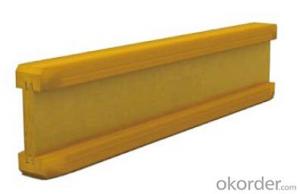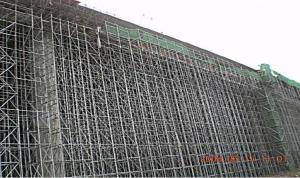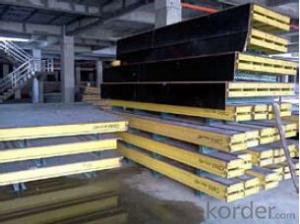Timber-Beam for formwork and scaffolding system
- Loading Port:
- Tianjin
- Payment Terms:
- TT OR LC
- Min Order Qty:
- 50 m²
- Supply Capability:
- 1000 m²/month
OKorder Service Pledge
OKorder Financial Service
You Might Also Like
Characteristics:
◆ Standardized production lines.
Supply capability: 3000m/day, Lmax = 6600mm.
◆ Finger jointing of the flange and web, the strength of timber beam is highly improved.
Max. shearing force failure load:40KN
◆ Well treated to prevent from water penetration or erosion, so the service life maximally extended.
Normally, CNBM timber beam H20 can be used for 4 to 5 years, the exact using time would depend on maintenance & storage.
◆ Robust caps at the end of the girders protect against damages.
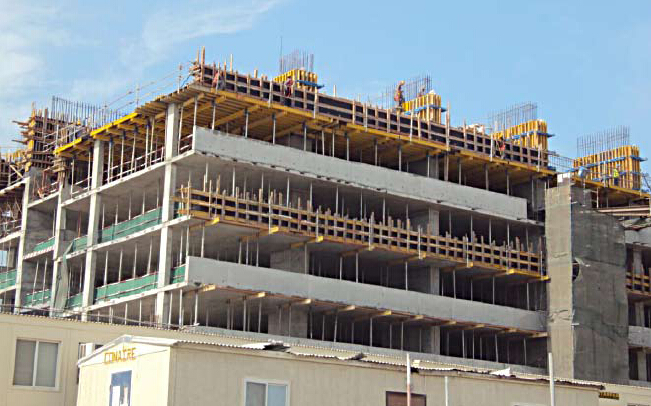
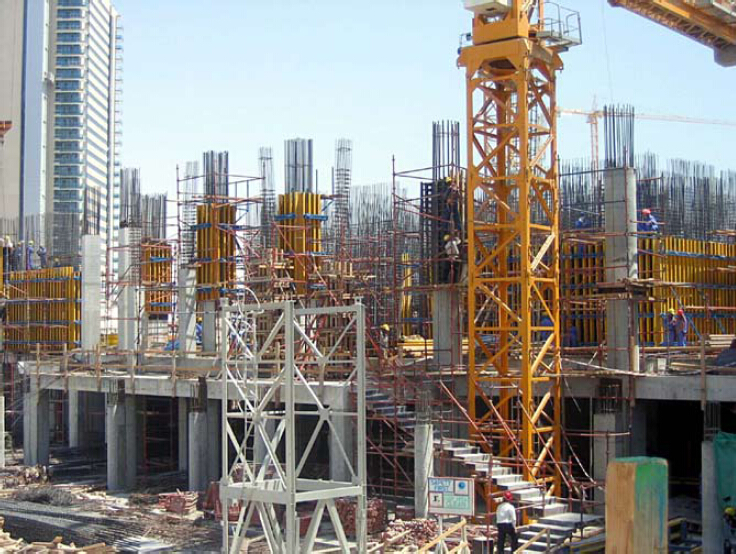
- Q: How does steel formwork handle formwork stripping and cleaning?
- Steel formwork handles formwork stripping and cleaning efficiently due to its durability and strength. It can withstand the pressure and force exerted during the stripping process without getting damaged. Additionally, steel formwork is easy to clean as it has a smooth surface, allowing for quick and thorough removal of any residual concrete or dirt. Its robust nature and low maintenance requirements make it a preferred choice for formwork stripping and cleaning in construction projects.
- Q: Can steel formwork be used for tunnel construction projects?
- Steel formwork is indeed suitable for tunnel construction projects. Its durability allows it to withstand the pressure and forces exerted during tunnel construction. Moreover, it provides a robust and stable structure for pouring concrete and forming the tunnel walls. An added advantage is that steel formwork is reusable, making it a cost-effective option for tunnel construction projects. Furthermore, steel formwork can be easily tailored to meet the precise requirements of the tunnel design, enhancing efficiency and precision during construction. In conclusion, steel formwork's strength, durability, and flexibility make it an excellent choice for tunnel construction projects.
- Q: What are the typical fire resistance ratings of steel formwork systems?
- The typical fire resistance ratings of steel formwork systems can vary depending on various factors such as the specific design, material thickness, and fire protection measures in place. However, steel formwork systems generally have fire resistance ratings ranging from 30 minutes to 120 minutes, providing adequate protection in case of fire incidents.
- Q: Are there any specific maintenance requirements for steel formwork?
- Yes, steel formwork requires regular maintenance to ensure its durability and optimal performance. Some specific maintenance requirements for steel formwork include cleaning, removing concrete residue, inspecting for any signs of damage or corrosion, and applying protective coatings to prevent rust. Additionally, proper storage and handling practices should be followed to prevent any deformation or bending of the steel formwork components.
- Q: How does steel formwork prevent concrete shrinkage and cracking?
- Steel formwork helps prevent concrete shrinkage and cracking by providing strong and rigid support during the curing process. When concrete is poured into the steel formwork, it takes the shape of the structure being built and hardens over time. The steel formwork acts as a mold, holding the concrete in place and preventing it from shrinking or cracking as it dries. One of the main causes of concrete shrinkage and cracking is the loss of moisture during the curing process. As the water in the concrete evaporates, it causes the material to shrink. This shrinkage can lead to cracks forming in the concrete if it is not properly supported. Steel formwork helps prevent this shrinkage by providing a tight and secure enclosure for the concrete. It ensures that the concrete retains its moisture and does not dry out too quickly. This slow and controlled drying process allows the concrete to cure evenly and reduces the likelihood of shrinkage and cracking. Additionally, steel formwork provides stability and support to the concrete, preventing it from moving or shifting as it hardens. This stability helps to distribute the forces and stresses evenly, reducing the risk of cracking or structural failure. Furthermore, the smooth and rigid surface of steel formwork helps to achieve a high-quality finish on the concrete. This prevents any irregularities or imperfections that may weaken the structure or make it more susceptible to cracking. In summary, steel formwork plays a crucial role in preventing concrete shrinkage and cracking by providing support, stability, and moisture retention during the curing process. Its strong and rigid structure ensures that the concrete remains intact and achieves a high-quality finish, reducing the risk of structural issues and enhancing the durability of the construction.
- Q: Can steel formwork be used for infrastructure construction projects?
- Indeed, infrastructure construction projects can make effective use of steel formwork. This option, known for its versatility and durability, proves ideal for a range of infrastructure types including bridges, tunnels, dams, and buildings. Given its strength and rigidity, it can withstand the heavy loads and high pressures commonly associated with such projects. Moreover, its easy dismantling and reusability factor into its cost-effectiveness and sustainability. As an added advantage, steel formwork offers flexibility for customization, enabling precise and accurate construction tailored to specific project requirements. Ultimately, steel formwork stands as a dependable and efficient solution for infrastructure construction projects.
- Q: Can steel formwork be used for residential construction projects?
- Yes, steel formwork can be used for residential construction projects. Steel formwork offers several advantages such as durability, reusability, and high load-bearing capacity, making it suitable for both small and large-scale residential projects. Additionally, steel formwork allows for precise and efficient construction, ensuring high-quality finishes in residential buildings.
- Q: What are the considerations when designing steel formwork for architectural features?
- When designing steel formwork for architectural features, there are several considerations that need to be taken into account. Firstly, the formwork design should align with the desired aesthetic of the architectural feature, ensuring that it complements the overall design intent. Additionally, the formwork needs to be structurally sound and capable of supporting the weight and forces exerted by the concrete during pouring and curing. It is important to consider the ease of assembly and disassembly of the formwork to ensure efficiency in construction. Furthermore, the formwork design should allow for proper placement of reinforcement and any necessary inserts or embedded items. Finally, considerations such as cost, durability, and maintenance should also be factored in to ensure the longevity and functionality of the steel formwork.
- Q: How does steel formwork accommodate for different concrete pouring heights?
- Steel formwork is a versatile and adjustable system that can easily accommodate different concrete pouring heights. It consists of interlocking steel panels that can be assembled in various configurations, allowing for the creation of customized formwork according to the specific requirements of each construction project. One way steel formwork accommodates for different concrete pouring heights is through the use of adjustable props or supports. These props can be extended or retracted to the desired elevation, providing the necessary support and stability for the formwork. By adjusting the height of the props, the formwork can be easily adapted to accommodate different pouring heights. Additionally, steel formwork often includes adjustable brackets or clamps that can be moved up or down along the vertical bars of the system. These brackets allow for the vertical positioning of the formwork panels, enabling them to be adjusted to the desired height for concrete pouring. Furthermore, steel formwork systems usually have a wide range of panel sizes available, which can be interchanged and combined to achieve the desired height. This flexibility allows for the construction of formwork that perfectly matches the required pouring height, eliminating the need for extensive modifications or customizations. Overall, the adjustable features of steel formwork, such as props, brackets, and interchangeable panels, make it easy to accommodate different concrete pouring heights. This adaptability not only ensures the efficient and precise construction of concrete structures but also saves time and reduces labor costs on construction sites.
- Q: How does steel formwork affect the overall maintenance requirements of the structure?
- Steel formwork can have a significant impact on the overall maintenance requirements of a structure. One of the major advantages of using steel formwork is its durability and long lifespan. Unlike traditional timber formwork, steel formwork is more resistant to wear and tear, weather conditions, and insect infestation. This means that the structure built using steel formwork will require less maintenance over time. Additionally, steel formwork provides a smooth and even surface finish, reducing the need for extensive repair and maintenance work. This is especially important for structures that require a high level of accuracy and precision, such as tall buildings or bridges. The use of steel formwork ensures that the structure is built with minimal imperfections, reducing the need for costly and time-consuming maintenance in the future. Furthermore, steel formwork is designed to be reusable, which can significantly reduce maintenance costs. After the concrete has set, the steel formwork can be easily dismantled and used for other construction projects. This not only saves money but also reduces waste, making steel formwork a more sustainable option. However, it is important to note that steel formwork requires proper cleaning and maintenance after each use to ensure its effectiveness and longevity. Regular inspections and maintenance checks should be conducted to identify any signs of damage or deterioration. Any repairs or replacements should be carried out promptly to prevent further issues. In summary, the use of steel formwork can greatly reduce the overall maintenance requirements of a structure. Its durability, resistance to damage, and reusability make it a cost-effective and low-maintenance option. However, proper cleaning, maintenance, and periodic inspections are still necessary to ensure its optimal performance and longevity.
Send your message to us
Timber-Beam for formwork and scaffolding system
- Loading Port:
- Tianjin
- Payment Terms:
- TT OR LC
- Min Order Qty:
- 50 m²
- Supply Capability:
- 1000 m²/month
OKorder Service Pledge
OKorder Financial Service
Similar products
Hot products
Hot Searches
Related keywords
